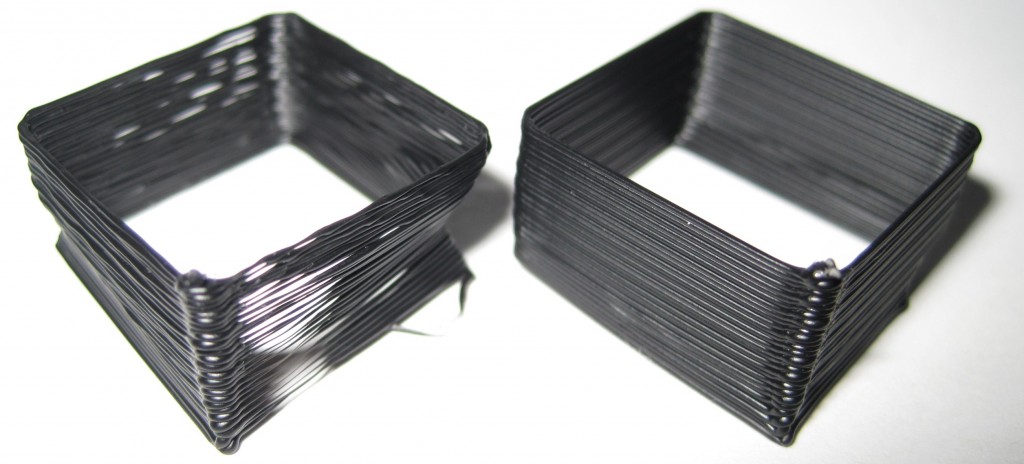Update 4/21/2011: This post is more than a year old. Since then I’ve created ProfileMaker which should eliminate the need for almost all of these steps. Share and enjoy!
A MakerBot Operators group member, Cliff Biffle, has posted a very comprehensive list his Skeinforge tuning and calibration procedure. Cliff owns MakerBot #69 from Batch#4, named Kallisti. Although Cliff has a MakerBot Skeinforge tuning page, it looks like he hasn’t had a chance to transcribe his lab notebook yet. However, Cliff has been patient enough to type up his Skeinforge calibration information twice for the benefit of the MakerBot Operators group. Here are links to his original postings on 1/6/2010 and another on 1/15/2010.
The other day I wanted to go back and find his calibration procedure, but had forgotten who had posted it, when it was posted, and which thread it was posted. Having now found it, I don’t want to lose it again. It turns out that Cliff had posted it once in response to my own question about dialing in Skeinforge settings in order to print up lego pieces! Thanks Cliff!
I’ve mashed his two posts together to put together this checklist:
- Adjust Temperature: Skeinforge -> Raft
- Find a temperature that allows you to extrude quickly and easily without too much popping or smoking
- MakerBlock: I have one of the 1mm thermistors, use the Zach 1 temperature table, and print reliably at 220
- Adjust Layer Height: Skeinforge -> Carve -> Layer Thickness (mm)
- Cliff uses the default of 0.36
- Adjust Extrusion Speed: Skeinforge -> Speed -> Flowrate PWM Setting (if PWM Setting is Chosen)
- Make the extruder go slower and lower the PWM value
- Cliff uses 230
- Adjust Feedrate: Skeinforge -> Speed -> Feedrate (mm/s)
- Too fast and you lose the fine detail and introduce errors. Too slow and it will be too… slow.
- Adjust Skeinforge to understand how much plastic is being extruded
- Raise the Z axis and perform a test extrusion into the air
- Do not pull or stretch the extrusion
- Using calipers, measure its diameter, D
- Go into Skeinforge and look up the configured layer thickness, T, from Skeinforge -> Carve -> Layer Thickness (mm)
- Divide the diameter by the thickness, D/T
- Set Skeinforge -> Speed -> Extrusion Diameter Over Thickness (ratio) to D/T
- Print a test piece with thin walls
- Measure the width, W, of a single extrusion somewhere above the first few layers
- Divide the width by the thickness, W/T
- Set Skeinforge -> Carve -> Extrusion Width Over Thickness (ratio) to W/T
- Cliff said this setting may be in Fill, but I think he may have meant Carve
- Nick Ames has suggested setting Skeinforge -> Carve –> Extrusion Width over Thickness (ratio), Skeinforge -> Inset -> Extrusion Perimeter Width over Thickness (ratio), and Skeinforge -> Speed -> Extrusion Diameter over Thickness (ratio) all to the same value. His post also has a lot of information and links about other potential Skeinforge tuning resources.
- Adjust other Skeinforge settings
- Overlap of grid corners
- Infill density
- Unpause
- Stretch


